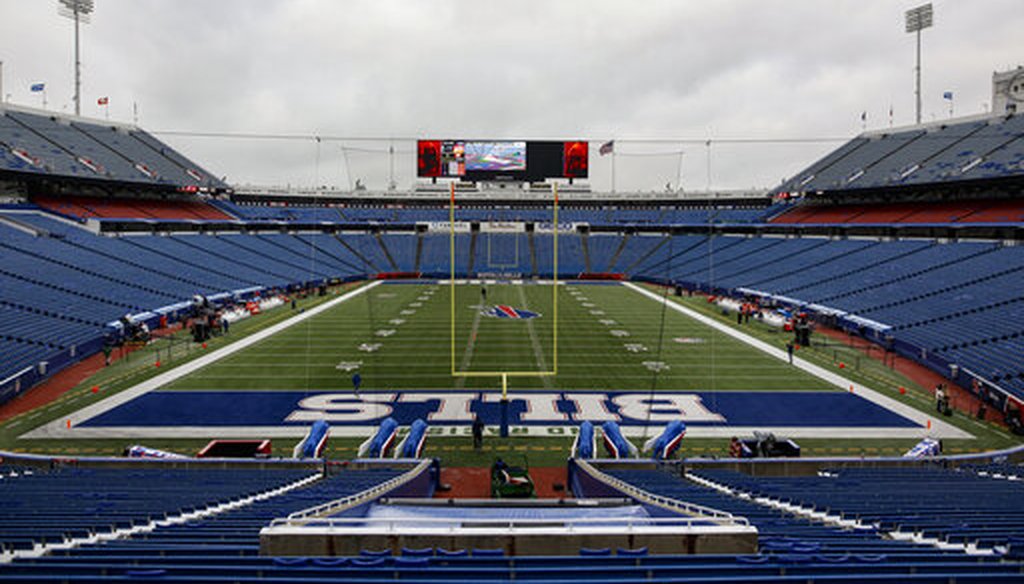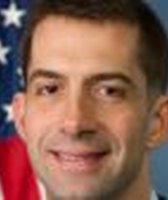Get PolitiFact in your inbox.

The Buffalo Bills' Highmark Stadium on Dec. 19, 2021. (AP)
If Your Time is short
• The Buffalo Bills’ Highmark Stadium in Orchard Park, N.Y., was built on Western New York Wenrohronon tribal burial grounds. The burial grounds are located under the stadium’s parking lots and near Abbott Road.
• However, an early Erie Indian village was not located on today’s stadium’s grounds, according to current historical research.
Over the years, some Western New Yorkers have, either seriously or jokingly, attributed the Buffalo Bills’ bad luck, including four straight losses in the Super Bowl, to a curse caused by restless spirits in and around their home stadium.
With recent approval by the state legislature of an $850 million public subsidy, a new Bills stadium is on track to be built by 2026. But for at least a few years more, the Bills will remain at Highmark Stadium in Orchard Park, N.Y., a suburb southeast of Buffalo.
At the stadium — which opened in 1973 and has been variously known as Rich Stadium, Ralph Wilson Stadium, and New Era Field — is a sign between gates 6 and 7 that recognizes a pioneer family cemetery and points to the source of the legend. The sign refers to the Sheldon family, who have sometimes been called the team’s "silent spectators."
The sign reads:
"Sheldon family cemetery. First recorded burial John Sheldon Jan. 16, 1832. His father, Joseph, was the first Sheldon to settle here in 1805. Cemetery restored by the Junior Yorkers and Orchard Park Historical Society. An early Erie Indian village was also located on the site of this stadium."
We took a closer look at the most up-to-date research on what exactly lay under the stadium and its parking lots. It appears that the stadium does sit upon Indian burial grounds, but not, as the sign says, an Erie Indian village.
According to a 2015 article in the Rochester Democrat & Chronicle, the original stadium blueprints that were drawn up in the early 1970s put the Sheldon family cemetery on the 50-yard line. The plans initially called for the family remains to be moved, but distant relatives of the Sheldon family pushed for changes, and the stadium’s design was changed, allowing the cemetery to remain.
However, this change meant that the stadium would instead disturb remains in a Native American burial ground.
Douglas Perrelli, who chairs the New York State Board for Historic Preservation and serves as president of the New York Archaeological Council, confirmed to PolitiFact New York that Native American burial grounds were affected by the construction process.
"There were definitely four areas of human remains that were disturbed when the stadium parking lots were constructed," Perrelli said. "There's pretty solid historic counts of burials under Abbott Road near the stadium." Exact data is lacking, however, because earlier construction nearby disturbed some other Indian graves during the 1940s, 1950s and 1960s, he said.
Perrelli said the best guess about the origin of the Native American burial sites on the stadium grounds is that they were Iroqouians who lived nearby from 1500 to 1600 A.D. This would include an Iroquois-speaking tribe called the Wenrohronon (or Wenro), which lived in a cluster of villages across Western New York for about a century.
The part of the legend that does not appear to be accurate, however, is that a Native American village site is located on the stadium grounds.
"Burial sites exist on and around the stadium," Perrelli said. However, he added that "the village site still exists today and is not on the same property as the stadium."
Our Sources
Buffalo Spree, "The Bills Curse," June 19, 2012
Buffalo News, "The silent spectators," Sept. 17, 1989
Democrat & Chronicle, "Roth: The Buffalo Bills’ ghostly gridiron," Oct. 30, 2015
WGRZ, "Stadium ‘curse’ lifted, Bills Mafia member holds indigenous ceremony to banish bad spirts," Jan. 15, 2022
WYRK, "There is a cemetery located on highmark stadium," Jan. 18, 2022
WNYRoots, "Sheldon Family Cemetery," March 26, 2000
Email interview with Douglas Kohler, Erie county historian, Feb. 17, 2022
Interview with Douglas Perrelli, Chair of NYS board for historic preservation and President of the New York Archaeological Council, March 16, 2022






























